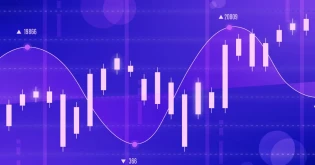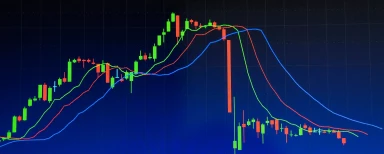Forex correlation pairs and How to trade it
-
Welcome to the exciting world of Forex trading! To become a successful trader, you need to have a deep understanding of different market dynamics, and one such dynamic is Forex pairs correlation. In this blog post, we will take a closer look at what Forex correlation pairs means and how it can help you make informed trade decisions. So grab your coffee and get ready for an insightful journey into the fascinating world of Forex pairs correlation!
What is Forex Correlation pairs
When it comes to the dynamic world of online forex trading, understanding the concept of forex correlation can be a powerful tool for traders. This phenomenon refers to the relationship between two separate currency pairs, showcasing either a positive or negative directional link.
Imagine two currency pairs moving in sync, both heading in the same direction with consistent momentum. In such cases, we say there is a positive correlation between them. This correlation indicates that the prices of these pairs tend to move in harmony, offering valuable insights to traders.
Conversely, a negative correlation between two currency pairs suggests that their prices move in opposite directions. Picture one currency pair rising while the other falls, creating a beautiful balance in the forex market. This negative correlation can provide traders with alternative opportunities for profit, as they can explore both upward and downward trends simultaneously.
The significance of comprehending forex correlations extends beyond merely identifying trends. It plays a crucial role in managing risk effectively. By understanding the correlations that exist across various currency pairs, traders can ensure their trading accounts are not overly exposed to a single direction of the market. This diversified approach promotes stability and reduces the vulnerability of a trader's portfolio to sudden market shifts.
Seasoned traders often combine currency correlation analysis with hedging tactics to further mitigate risk. Hedging involves opening positions in two currency pairs with a negative correlation, allowing traders to offset potential losses in one pair with gains in the other. This strategy empowers traders to safeguard their investments while actively participating in the forex market.
As traders embrace the concept of forex correlation, they gain a deeper understanding of the interconnected nature of global currencies. This knowledge enables them to navigate the markets with confidence, identifying opportunities and managing risk strategically. By harnessing the power of forex correlation and employing effective risk management techniques, traders can embark on their trading journey with optimism, aiming for consistent success in the dynamic world of forex trading.
Suggested read: Best currency pairs to trade
Trading on forex correlation pairs
- Before you trade on the forex correlation pair, first you should identify the currency pairs which have a positive or negative correlation to each other.
- If the correlation is positive, you will choose the currencies of the same position, and if the correlation is negative, you will choose the currencies having an opposing position.
- Traders are always likely to hold correlated pairs so that they can diversify themselves and also maintain the same overall direction. This can protect them from the risk as the traders still have the option to make on other pair’s profit.
- The traders can also trade to hedge their risk on their active currency trades.
Let’s take an example.
There are two currency pairs USD/CHF and EUR/USD, a trader is holding a long position on USD/CHF for hedging any loss he/she may incur on active currency, i.e. EUR/USD. It is so because these are pairs that have a strong negative correlation.
The trader can go for two opposite positions with two pairs of positively correlated currencies as the gain on one would eventually offset the losses on the other.
For example-
There are two positively correlated currency pairs, i.e. EUR/USD and GBP/USD. The Euro zone is expected to suffer from economic slowdown; in that case, a temporary short position on GBP/USD can offset losses on a long EUR/USD position.
Suggested read: Forex Trading Terminology
Conclusion
We have covered the basics of currency correlation and how to use it to your advantage in trading. A deeper understanding of correlations between Forex pairs can help you identify opportunities for more profitable trades based on their current trends and direction. Any trader looking to optimise their financial returns should consider exploring currency pair correlations within their strategy, as they can potentially lead to higher profits with less risk than a single-instrument approach would entail.
Related Articles
View All >
Best Forex Pairs to Trade for Beginners 2026
The first time in the forex market may be daunting. There are hundreds of combinations that form a currency, and a beginner may be at a loss as to w...

What is the 3-5-7 Rule in Trading?
Risk awareness is one of the largest challenges for any person venturing into the financial markets. Most traders do not fail because they do not kn...

Best Day Trading Platform for Beginners
Day trading is now one of the most interesting and thrilling methods of engaging in financial markets, particularly among novices who would want to...

Understanding Interest Rates in Forex Trading: A Guide for Beginners
The interest rate is one of the strongest variables that determine the price of the currency in the forex trade. Being a novice and wanting to learn...

7 Effective Forex Trading Strategies for 2025
In such a dynamic environment in the forex trading industry, a good strategy is...

Boost Your Algorithmic Trading Strategy with Forex VPS Hosting
Fast time is of the essence in the fast world of Forex trading, and more so when you are using an Algorithmic Trading Strategy to run your trades. T...

How do you create a Forex trading bot using ChatGPT?
The forex market is considered to be one of the most liquid and dynamic financial markets in the world. Traders are constantly seeking new means of...

How Economic News Affects Forex Trading?
Economic news is one of the factors that influences the exchange in the forex field. The economy-related events are carefully observed by the trader...

What is Price Action Trading in Forex?
Forex price action trading is the most respectable and time-tested trading strategy in all financial markets. Movement, candlestick patterns, and pr...

Advantages of Using the Best Regulated Brokers for Forex
In recent times, Forex trading has become an exciting way for people to access the global financial markets and benefit from currency movements to g...

The Future of Copy Trading with AI, Bots, and Next-Gen Strategies
Trading is experiencing rapid evolution from the use of new technology and newer techniques. Copy trading has been one of the leading forms of evolu...

AI in Forex Trading: The Benefits and Risks
Forex trading is a lively, fast-paced, worldwide market where technology is more and more important. Forex trading has greatly improved due to the i...

What is Latency? How Does Latency Impact Forex Trading?
Latency is one of those important considerations that are often not spoken about much in online Forex trading. It does not matter whether you are a...

How to Trade Forex Using Crypto
In this fast-evolving financial world, the coupling of crypto with traditional markets has spawned new trading avenues globally. One of the trendy a...

When is the Best Time to Trade the Forex Market?
The Forex market is a volatile global market operating around the clock for five days a week, with opportunity forever knocking on the door for any...

How to Trade Stocks with Leverage 1:5000
Stock trading has never been so simple, and traders now have time-tested methods and advanced technology to capitalize on trading profits. One of th...

Forex MT4 Robot: How to Create and Set Up
In today's fast-paced financial markets, you will find traders searching for tools that will meet their needs. Forex trading has some popular ap...

What is a Forex VPS? Benefits and How to Choose
In today’s era, speed and stability are key to making a potentially profitable trade in currencies. Virtually, a Forex VPS Hosting could be an...

What is Swing Trading in Forex?
Swing trading is an intermediate trading style, a compromise between day trading and longer-term investing. It involves holding onto positions from...

What is Spread in Forex Trading & How is it Calculated?
Forex trading is known as the largest financial market in the entire world and it is a marketplace for everyone who wants to make a potential profit...

What is Base and Quote Currency in Forex
Forex trading is a trading practice of global currencies through trading in pairs all over the world. When you engage in forex trading, you are deal...

Difference Between Copy Trading & Social Trading
In the world of online investing, copy trading, and social trading have emerged as powerful strategies, especially in the forex market. These method...

How to Manage Risk While Copy Trading?
Copy trading has become a popular method that enables traders to copy the transactions of skilled traders. For beginners, it can simplify trading an...

How to Stay Focused and Disciplined in Forex Trading?
In forex trading, there are vast opportunities for traders if they are focused and disciplined. Success in this dynamic market of changing currency...

Tips for Choosing the Right Brokerage Platform for Your Trading Needs
Investors at all levels of experience can find a lot of opportunities in the exciting world of finance. But choosing the right brokerage platform is...

What is a Currency Trading Platform?
Currency trading platforms are software systems that allow traders to participate in trading online currency. They give you a chance to view real-ti...

Exploring the Best Forex Trading Indicators
The use of indicators is crucial while forex trading. Many traders use these indicators daily to help them determine when to buy and sell in the cur...

Types of Hedges and Hedging Techniques
Hedging is like a financial strategy that financial backers should understand and use since it accompanies a lot of advantages. It acts as an invest...

Hedging in Forex Trading
Hedging is a strategic pillar of risk management in the complex world of trading, and understanding its nuances is paramount for any trader navigati...

A Guide to Starting a Hedge Fund and its Benefits
In today’s era, Hedge funds are one of the most well-known investment vehicles. They offer benefits for investors including the ability to pro...

What is Hedging? – An Ultimate Guide
The concept of hedging can be applied to a variety of investments like bonds, commodities, stocks, and currencies. Hedging typically involves the ut...

How to Trade Forex for Beginners
Welcome to the exciting world of Forex investments, where people can make a lot of money by swapping currencies all over the world. The

How to start forex trading?
Forex trading is an exciting market that offers tradable currencies the chance to react to changes quickly through a Forex trading platform. Forex i...

What is Volatility in Forex?
The term 'Volatility' in the context of forex is a measure of the fluctuation in the value of a currency pair over a specific period. It is...

Most Traded Currency Pairs in Forex Market
If we talk about currency pairs then it is imperative to say that their existence in the early 90s gave rise to an entire domain of trading. Nowaday...

Know the Difference between Forex Trading and Stock Trading
The forex trading and the stock trading, are two of the most popular markets for traders of assets. Making the right decision when choosing one of t...

All you need to know about Social Trading: Beginners Guide
Introduction: What is Social Trading? Trading is becoming more and more popular as people now turn to financial markets to provide them...

An Overview to Foreign Exchange Market
Introduction to Foreign Exchange Market The Forex Market (also known as the Forex, FX, or Currency Market) is the over-the-counter (OTC)...

Types of Forex Charts and How to Read
When it comes to trading, there are a lot of different charts that can be used. This article will teach you about the different types of charts and...

5 Profitable Forex Copy Trading Tips
If you're looking for investment alternatives with low-cost and low-risk that also have a higher chance of success rates and rewards, Forex

Know the Top Strategies to Trade Forex in 2022
When it comes to trading foreign currency, it is unquestionably essential to ensure that you have identified the most successful tactics overall. Ke...

Copy Trading Guide and its Advantages and Disadvantages
Getting inspired by colleagues or an expert trader and beginning with trading cryptocurrency sounds incredible. However, it's not that easy; tra...

A Complete Guide to Understand Forex Market!
What is Forex Trading? Forex is the settlement of transactions in any one currency for delivery of another. Its settlement system is ma...

Basic Forex Trading Terminologies Every Trader Should Know?
Trading and investing can be a complicated process. There is a plethora of terms to keep up with, and you need to understand what they mean in order...

Everything You Need to Know About Currency Pairs
What is a currency pair? A currency pair enables the comparison of two distinct currencies' values. Consider the existence of two d...

How Online Financial Trading Works?
How Online Financial Trading Works? With the advent of online financial trading, investors seem to have become more interested in financ...

Best Global Online Forex Broker
The largest and the most actively traded financial market is the foreign exchange market. When it comes to trading in the foreign exchange market, t...

Tips to Understand Online Financial Trading
Tips to Understand Online Financial Trading As in now, every individual wants to invest in some financial asset. Online financial tradin...

